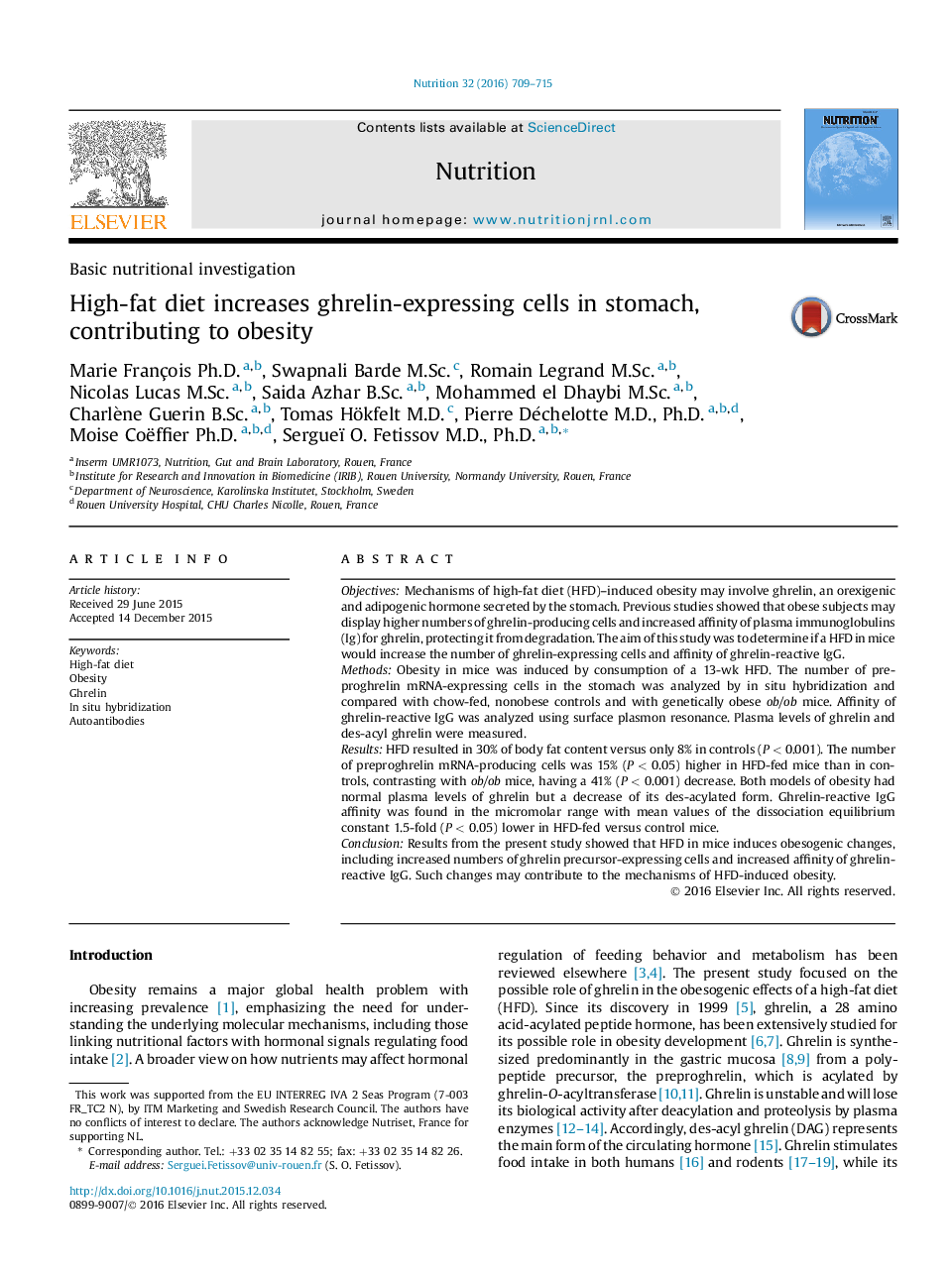| Article ID | Journal | Published Year | Pages | File Type |
|---|---|---|---|---|
| 6088980 | Nutrition | 2016 | 7 Pages |
â¢Obesity in mice was induced by 13 wk of a high-fat diet (HFD).â¢Ghrelin mRNA expression in the stomach was studied by in situ hybridization.â¢HFD mice had increased numbers of ghrelin precursor mRNA- expressing cells.â¢HFD mice had normal plasma ghrelin and increased affinity of ghrelin-reactive immunoglobulin G.â¢These changes of the ghrelin system support its obesogenic role in HFD mice.
ObjectivesMechanisms of high-fat diet (HFD)-induced obesity may involve ghrelin, an orexigenic and adipogenic hormone secreted by the stomach. Previous studies showed that obese subjects may display higher numbers of ghrelin-producing cells and increased affinity of plasma immunoglobulins (Ig) for ghrelin, protecting it from degradation. The aim of this study was to determine if a HFD in mice would increase the number of ghrelin-expressing cells and affinity of ghrelin-reactive IgG.MethodsObesity in mice was induced by consumption of a 13-wk HFD. The number of preproghrelin mRNA-expressing cells in the stomach was analyzed by in situ hybridization and compared with chow-fed, nonobese controls and with genetically obese ob/ob mice. Affinity of ghrelin-reactive IgG was analyzed using surface plasmon resonance. Plasma levels of ghrelin and des-acyl ghrelin were measured.ResultsHFD resulted in 30% of body fat content versus only 8% in controls (PÂ <Â 0.001). The number of preproghrelin mRNA-producing cells was 15% (PÂ <Â 0.05) higher in HFD-fed mice than in controls, contrasting with ob/ob mice, having a 41% (PÂ <Â 0.001) decrease. Both models of obesity had normal plasma levels of ghrelin but a decrease of its des-acylated form. Ghrelin-reactive IgG affinity was found in the micromolar range with mean values of the dissociation equilibrium constant 1.5-fold (PÂ <Â 0.05) lower in HFD-fed versus control mice.ConclusionResults from the present study showed that HFD in mice induces obesogenic changes, including increased numbers of ghrelin precursor-expressing cells and increased affinity of ghrelin-reactive IgG. Such changes may contribute to the mechanisms of HFD-induced obesity.
